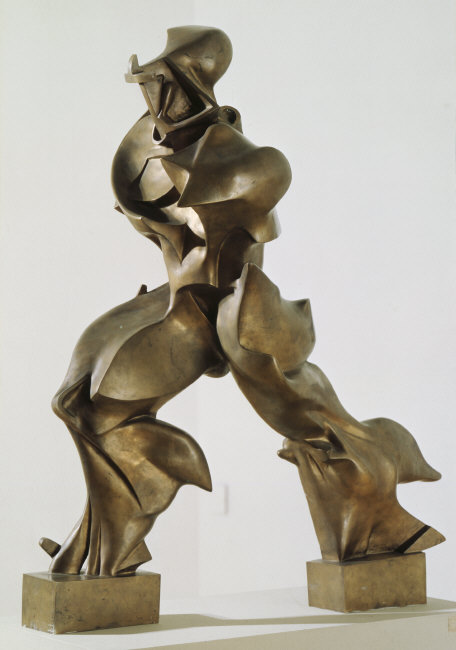By Anne Leader
Futurist Umberto Boccioni was born on 19 October 1882 in Reggio Calabria. Boccioni spent his youth in Forlì, Genoa, Padua, and Catania, moving to Rome in 1899, where he met Gino Severini and Giacomo Balla, also major players in the Futurist movement. Boccioni’s Unique Forms of Continuity in Space, perhaps his best known work, epitomizes the aims of the Futurist Manifesto, its muscular male figure striding forward into space as if into the future, ruthlessly leaving the past behind. Such dynamism is found throughout his two- and three-dimensional works and is celebrated in his writings.
Further reading: Ester Coen, Umberto Boccioni, New York: The Metropolitan Museum of Art, 1988
Unique Forms of Continuity in Space, bronze, 1913. London, Tate. Photo credit: Scala/Art Resource, NY.
Dynamism of a Cyclist, oil on canvas,1913. Milan, Gianni Mattioli Collection (on long-term loan to the Peggy Guggenheim Collection). Photo credit: Scala/Art Resource, NY
Dynamism of a Speeding Horse + Houses, 1915. Gouache, oil, paper collage, wood, cardboard, copper, and iron, coated with tin or zinc. The Solomon R. Guggenheim Foundation, Peggy Guggenheim Collection, Venice, 1976, 76.2553.30. Photo: David Heald.
Self-Portrait, 1905. Oil on canvas. New York: Metropolitan Museum of Art. Bequest of Lydia Winston Malbin, 1989.




